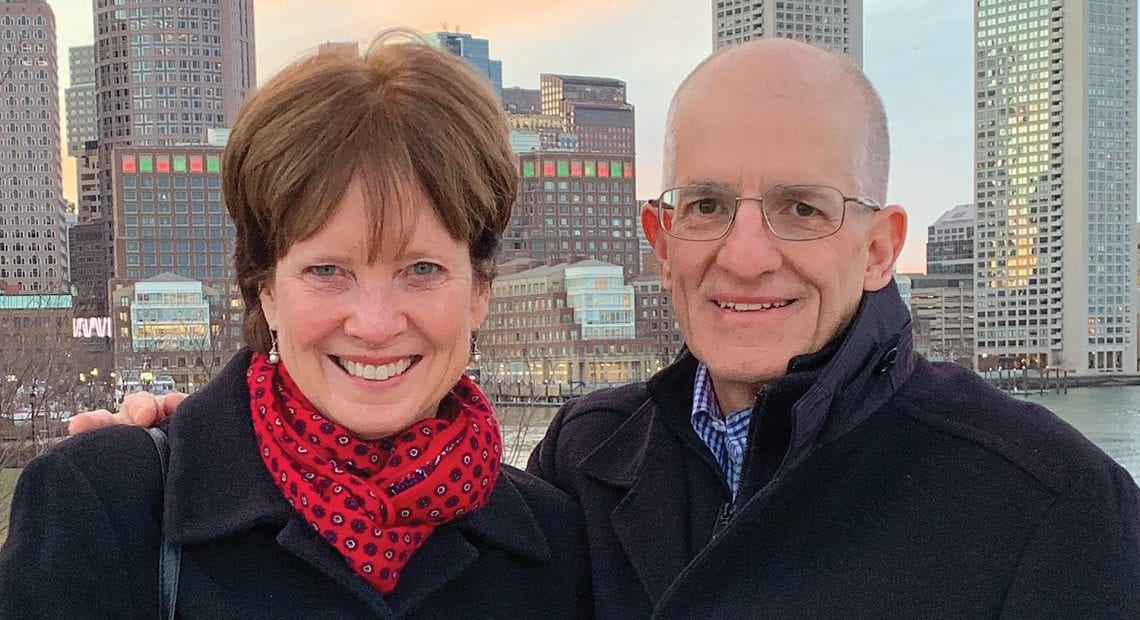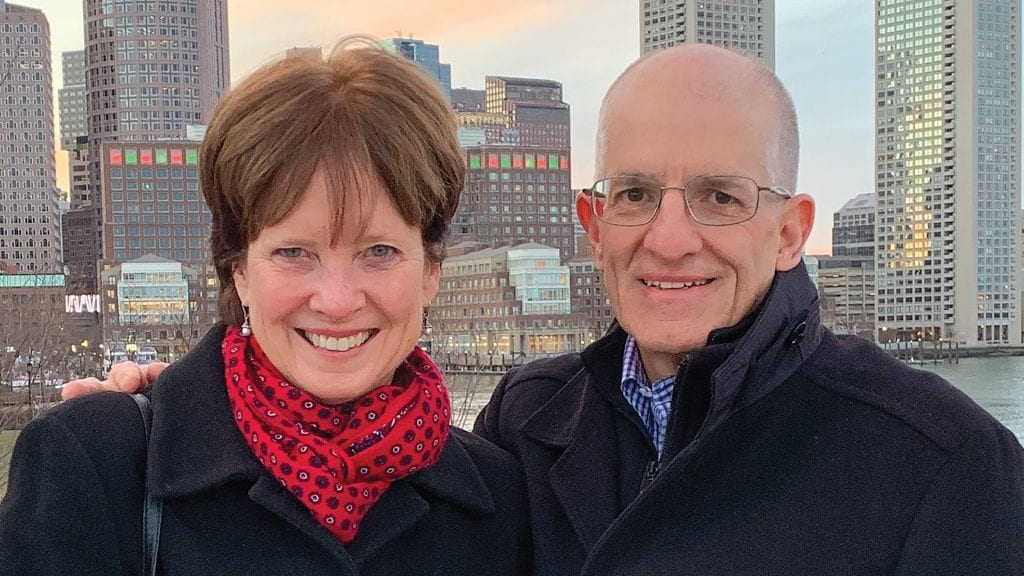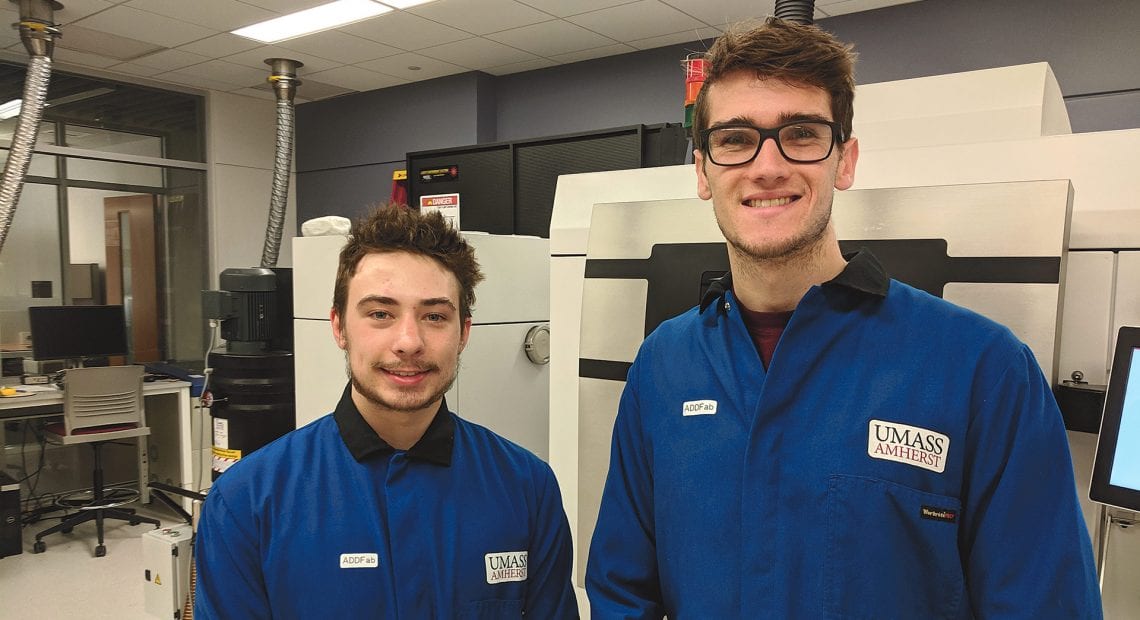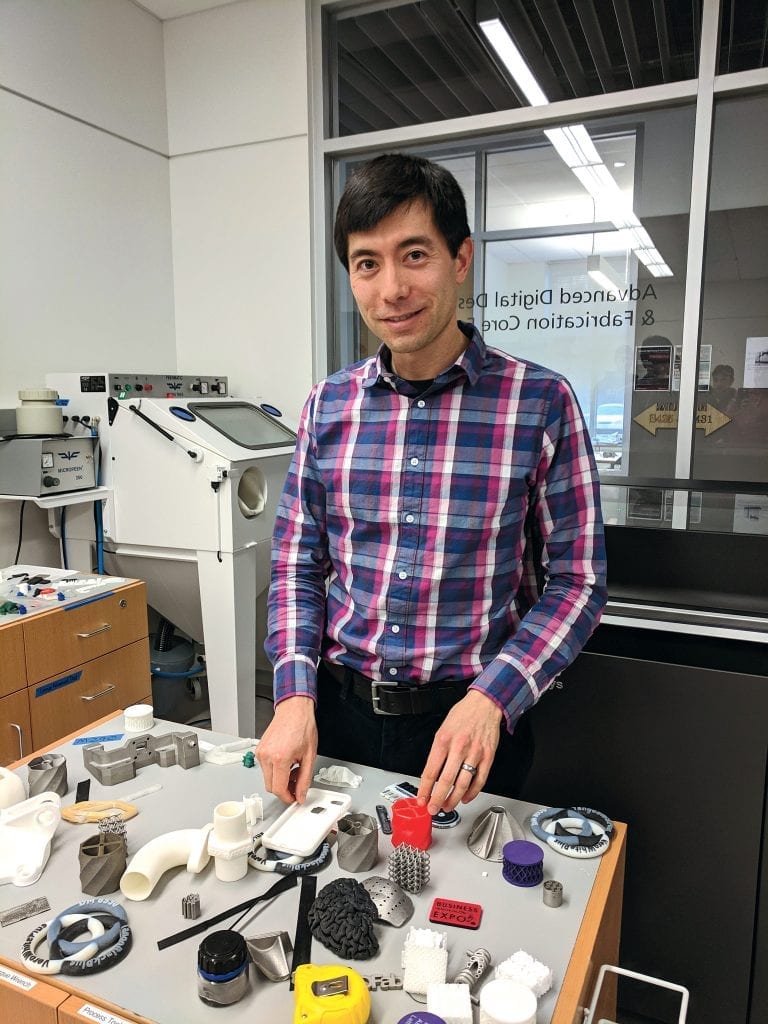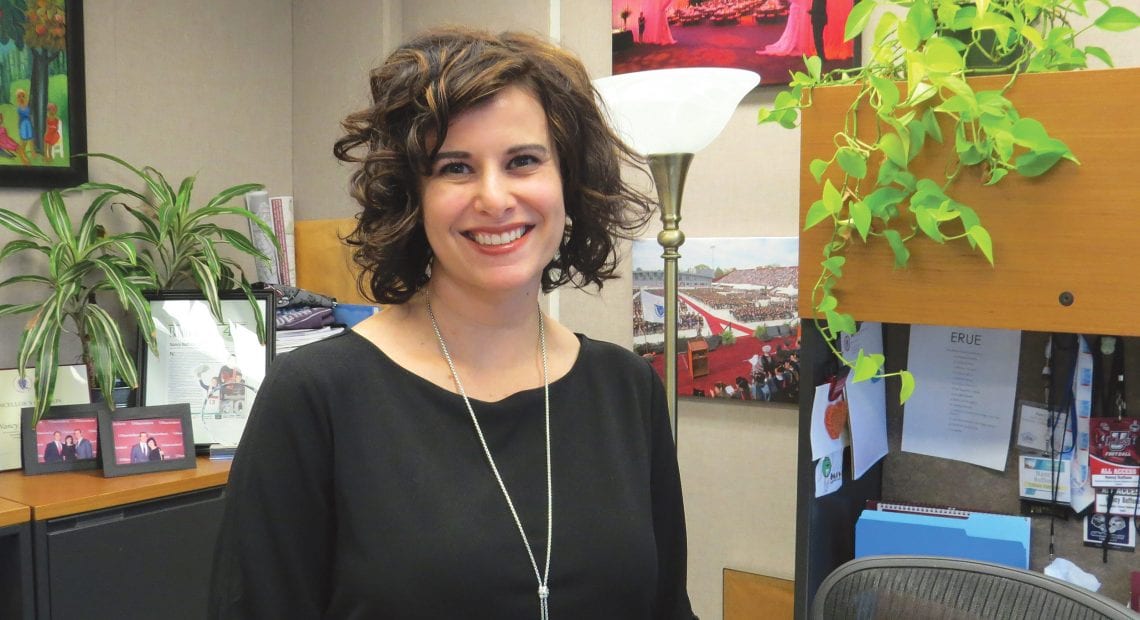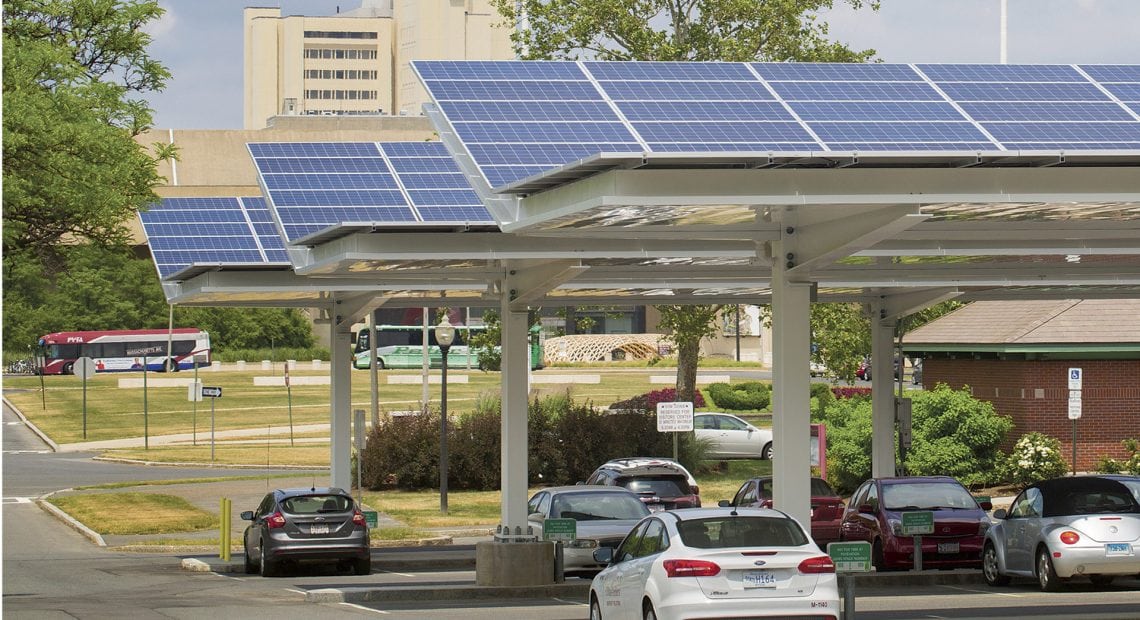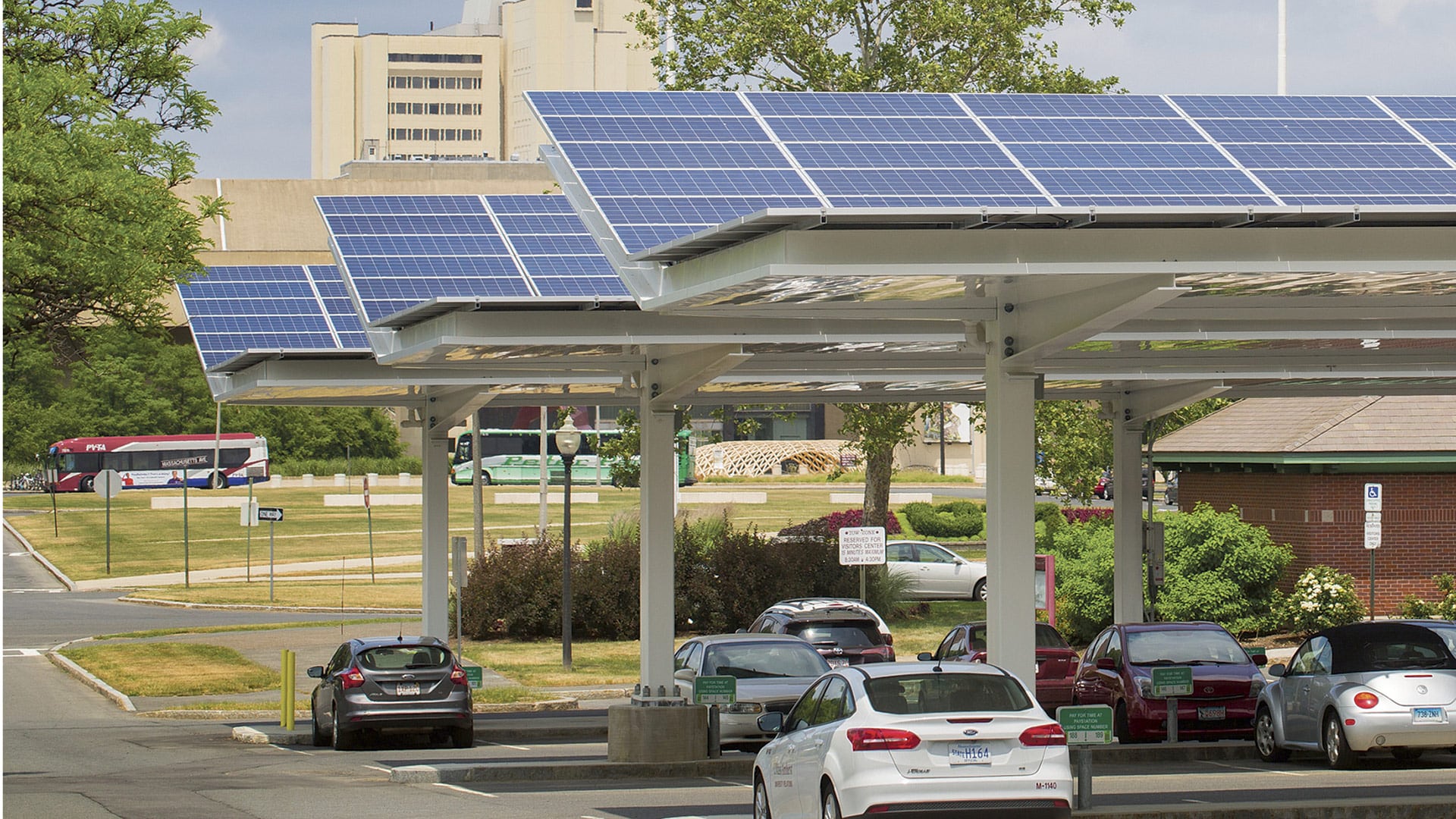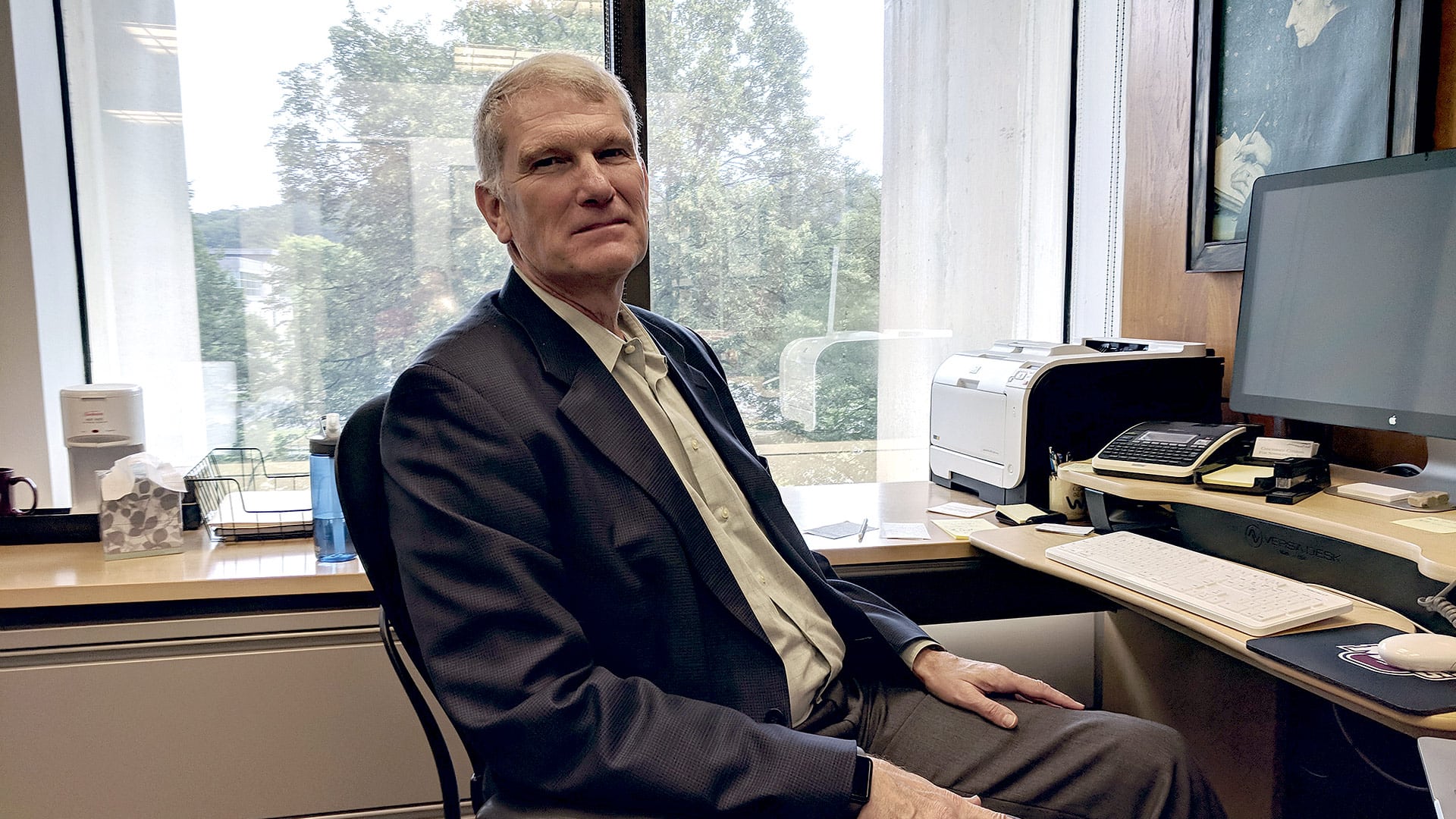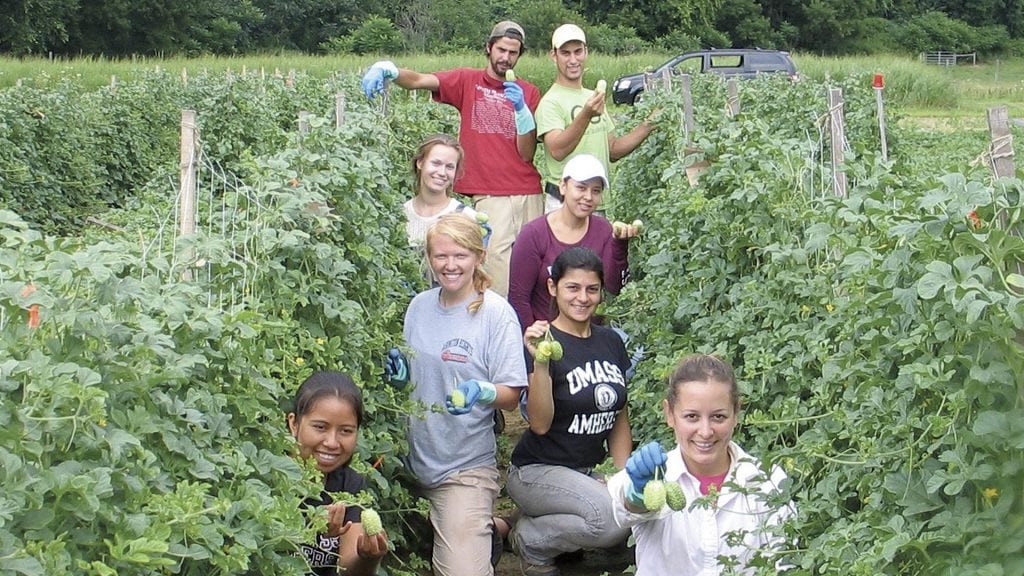Leadership Course
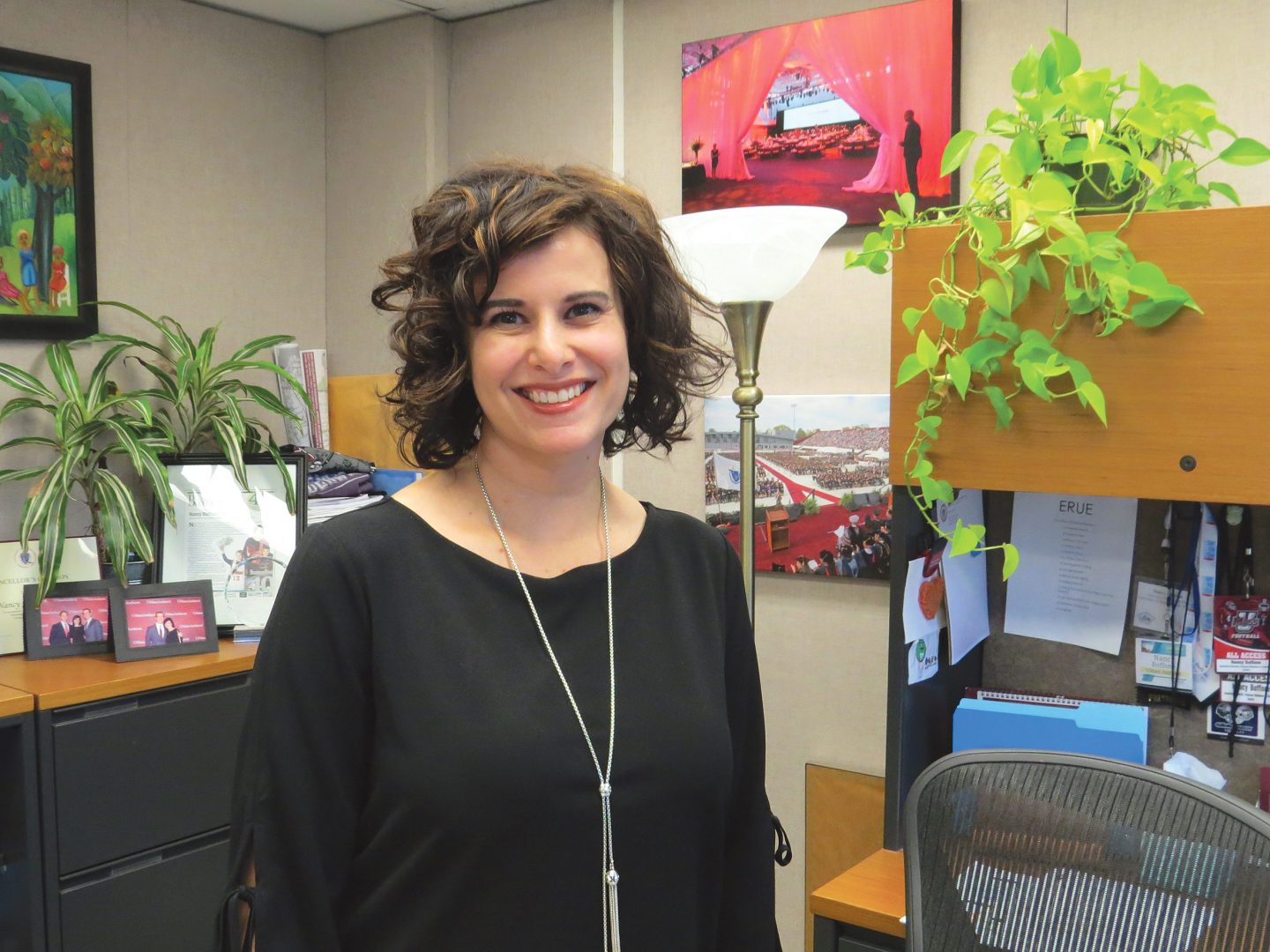
Nancy Buffone
Nancy Buffone has three degrees from UMass Amherst and has spent her entire career working for her alma mater. The job titles and long lists of responsibilities have changed over the past 23 years, but the one constant has been that she loves — really loves — coming to work every day. As a manager, leader, mentor, and role model, she says it’s her mission to make all those on the teams she supervises feel the same way.
Nancy Buffone says that as a manager — and as a leader — one thing she tries to do is put herself in the shoes of those she’s supervising.
And in the case of younger staff members, that’s not a hard assignment, because she’s certainly been in those shoes.
Indeed, not long after graduating from UMass Amherst more than 20 years ago, Buffone went to work for the institution in the Provost’s Office. A few decades later, she is associate vice chancellor of University Relations, a relatively new realm at the school, has two offices, and manages roughly 35 people handling a wide array of assignments, from planning commencement to putting out the alumni magazine to dispensing news.
Putting herself in the shoes of those carrying out that work enables her to better understand their wants, needs, anxieties, and challenges, she said, and overall, it makes her a better leader and the offices she supervises better places to work.
“If you don’t enjoy coming to work, it can be really hard to come to work every day,” she said, making an observation that essentially defines her approach to management.
Becoming a more effective leader is one of the few things not actually listed on Buffone’s job description (we’ll get into what is a little later on), but professional development is something she takes very seriously.
In fact, earlier in her career, while working for the university’s Provost’s Office, she developed a leadership program for academic department chairs — an initiative that filled what she saw as an enormous need.
“This was something brand new, and there was a lot to the job. It was a new challenge, and it was something just so out of the box, so out of the comfort zone for me.”
As part of her own professional-development efforts, she became a participant in the Leadership Pioneer Valley program, specifically as a member of its class of 2013. She said the experience not only provided her with a much better understanding of the four-county region — one of LPV’s stated goals — but helped her do something she said all good leaders need to do — step out of her comfort zone.
In this case, that meant taking on the additional responsibilities of the Communications Department with University Relations, which effectively tripled her workload and the number of people she was managing.
“This was something brand new, and there was a lot to the job,” she said. “It was a new challenge, and it was something just so out of the box, so out of the comfort zone for me.
“And to some extent, it still is, but I love it,” she went on. “This is a place to get creative and take a lot of the work that we’re doing here every day and think about how we’re going to tell that story; that’s fun, and that’s a challenge for me.”
Her ability to move well beyond that comfort zone has been invaluable as she has taken on that ever-growing list of responsibilities, many if not most of which have to do with telling the university’s story — and telling it much better than it was told decades ago.
In many respects, it’s better story to tell these days, said Buffone, who was in a particularly good mood on the day she spoke with BusinessWest because the new U.S. News & World Report rankings of the nation’s colleges had just come up, and the university had moved up a few notches in many of the categories.
“We keep moving in the right direction,” she said, noting, for example, that the school moved up from 29th to 26th on the list of best public institutions, and from 75th to 70th among all schools.
Meanwhile, her career has taken on the same general trajectory as the university’s. For this issue and its focus on women in business, we talked with Buffone about her multi-faceted role at the university, but moreso about the broad subject of leadership and her ongoing efforts to improve those skills.
Background — Check
There are two large bowls of candy in Buffone’s office at the Whitmore Administration Building on the UMass Amherst campus. And it’s the same in her other office on University Drive, where the Community Relations staff is based.
The candy serves many purposes, she told BusinessWest, noting that, in many respects, it is an icebreaker and a temptation that brings people to those offices, which they generally leave with more than a miniature Mr. Goodbar or Reese’s Peanut Butter Cup in their hand. Indeed, they also generally leave with a smile.
“We work very hard at our jobs, so I want to laugh very hard while we’re working,” she said of her general approach to management and leadership. “I want to make sure we’re having a good time while we’re doing this.
“As for the candy … my only rule is that you’re not allowed to ask — just take,” she went on. “But over the years, the candy has been a nice icebreaker for people, and it brings people in — it’s an opening.”
Stocking her office — and later her offices — with candy is just one of the traits Buffone has developed in a career that has seen her take on a growing list of responsibilities since she graduated from the university in 1995.

Nancy Buffone sums up her broad job description by saying that that many employees she now supervises are tasked with “telling UMass Amherst’s story.”
As a student, she took a job working in the Provost’s Office (the provost is the chief academic officer on the campus) and had the opportunity to work for and be mentored by Judy Barker, who, as fate would have it, retired soon after Buffone graduated.
She was offered a job approximating the one Barker held, thus commencing a 14-year stint in the Provost’s Office that turned out to be learning experiencing on a number of levels.
“It was an amazing educational opportunity,” Buffone recalled. “I learned so much not just about how UMass works, but also higher education and especially public higher education. Being in the Provost’s Office, I never knew from day to day what I’d be working on; my position evolved into more of a generalist position that allowed me to get involved with many different things.”
That list included everything from working on a number of search committees for many senior administrative positions to creating new events on campus, working with the news office to promote faculty honors, and much more.
Along the way, she worked for several provosts who also became mentors, and she also earned two more degrees, including a doctorate in higher education policy and leadership. She said she was given the opportunity by those provosts to take what she was learning in the classroom and apply it in the workplace, especially within the broad realm of leadership and, more specifically, the academic department-chair level.
“Looking at what universities did to train the next person to be in the chair’s role, it became clear that at most places … it was nothing,” she explained. “So I was able to create an orientation leadership program for new department chairs that still exists today, although in a slightly different format.”
That program was among the hardest things to give up as Buffone moved on to the next chapter in her career in early 2009, as executive director of External Relations and University Events as part of the new University Relations department.
That office, created by then-Chancellor Robert Holub, is tasked with a wide variety of assignments, including community relations, events, media relations, federal and state government relations, and more. Early on, Buffone was placed in charge of events, with one of the first being the school’s 150th anniversary, a party that was several years in the making.
“We work very hard at our jobs, so I want to laugh very hard while we’re working. I want to make sure we’re having a good time while we’re doing this.”
These days, she leads two teams, one handing events and community relations and the other assigned to communications — a very broad term covering everything from the alumni magazine to the college website.
As she said, the expansion of her duties and the title on her business card tripled her workload and put dozens more people under her supervision, giving her more opportunities to apply lessons learned in graduate school and also while working with and for many great mentors.
Leading by Example
When asked to describe her style of management, Buffone paused for a second before noting that she’s from New York (Long Island, to be more specific) and thus relies heavily on sarcasm.
And then gave an example. Sort of.
“I learned how to manage by making mistakes, and I try not to repeat my mistakes,” she said with a laugh. “I started small, managing one person, and then four, and then it grew seemingly overnight when I took on the communications team. But whatever the number is, it’s really about trying to understand what I can do for the people I work with every day to make their jobs easier.
“If they can focus on what they need to do, especially the creative people … if I can make it so they can focus on what they’re trying to accomplish and not worry about distractions, then that means they’re going to be better at their jobs,” she went on. “I’m trying to create an environment that will foster that creativity and foster collaboration; to me, that’s really important.”
As for her own professional development, Buffone said her involvement with LPV enabled her to do something she really needed to do but was hard pressed to find the time for — doing some reflection on what she wanted to do and where she wanted to go professionally.
“I think it’s hard to find the time to think about what you want and about how to get where you need to go when you’re moving from project to project — it’s just too fast sometimes,” she explained. “Leadership Pioneer Valley offered that opportunity to really think about what I wanted and what skills I needed to keep moving forward.”
Elaborating, she said that, through her LPV experience, she decided she needed to get more involved in her community (Amherst), and she has, serving as a town meeting member and as president of the Amherst Area Chamber of Commerce board.
Meanwhile, at the office — or, again, at both her offices — she works hard at her job and equally hard at making sure people enjoy their jobs, something she believes is key to promoting creativity and, ultimately, better, more effective telling of the university’s many stories.
That includes the staging of what she called ‘standing meetings,’ which are just that — 15-minute meetings, instituted about five months ago, in which the participants stand and, in this case, keep a huge inventory of individual projects (700 a year for the communications department alone, by Buffone’s estimate) on track.
“The meetings will go half an hour even though they’re supposed to go 15 minutes,” she explained. “But if you’re sitting, the meeting can go way too long; that’s the thinking, and they’ve been pretty effective.”
As have most of her initiatives, all aimed at not only getting the word out about everything going on at the school, but making everyone on the team as enthusiastic about their role as she is.
“I’ve been really lucky; I’ve been at UMass for 23 years now, and I love my job, I really do, and I love coming to work just about every day,” she said. “And that’s how I want the people I work with to feel.”
Grade Expectations
Unlike the university itself and several of its departments — from food service to the marching band — there are no rankings for communications and events departments.
But there are still measures of success, and plenty of them, Buffone said, listing everything from letters to the editor of the alumni magazine (they show that the material is being read) to feedback on a host of events, to the sense of satisfaction showed by her team members when one of those events is over.
Another measure might be how many times she has to fill those candy bowls — which is often. That shows that people are breaking the ice, coming into her offices, communicating, and enjoying their hard work.
Which, at this university and within this department, is an effective course of action — literally and figuratively.
George O’Brien can be reached at [email protected]



